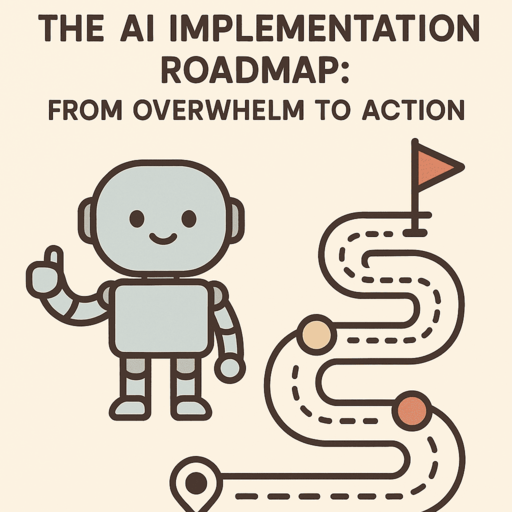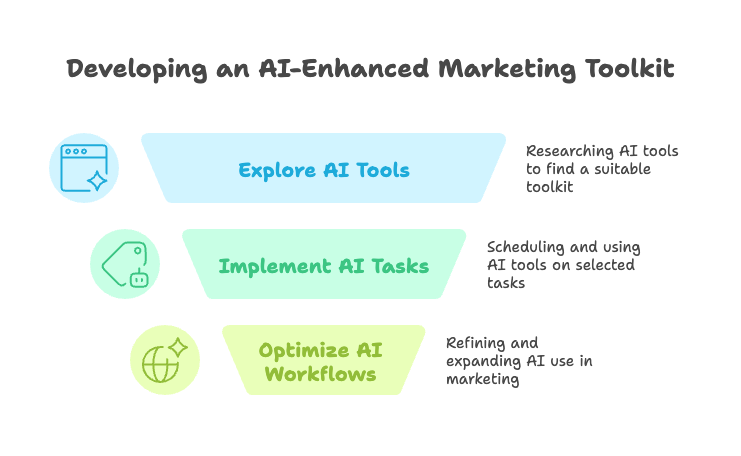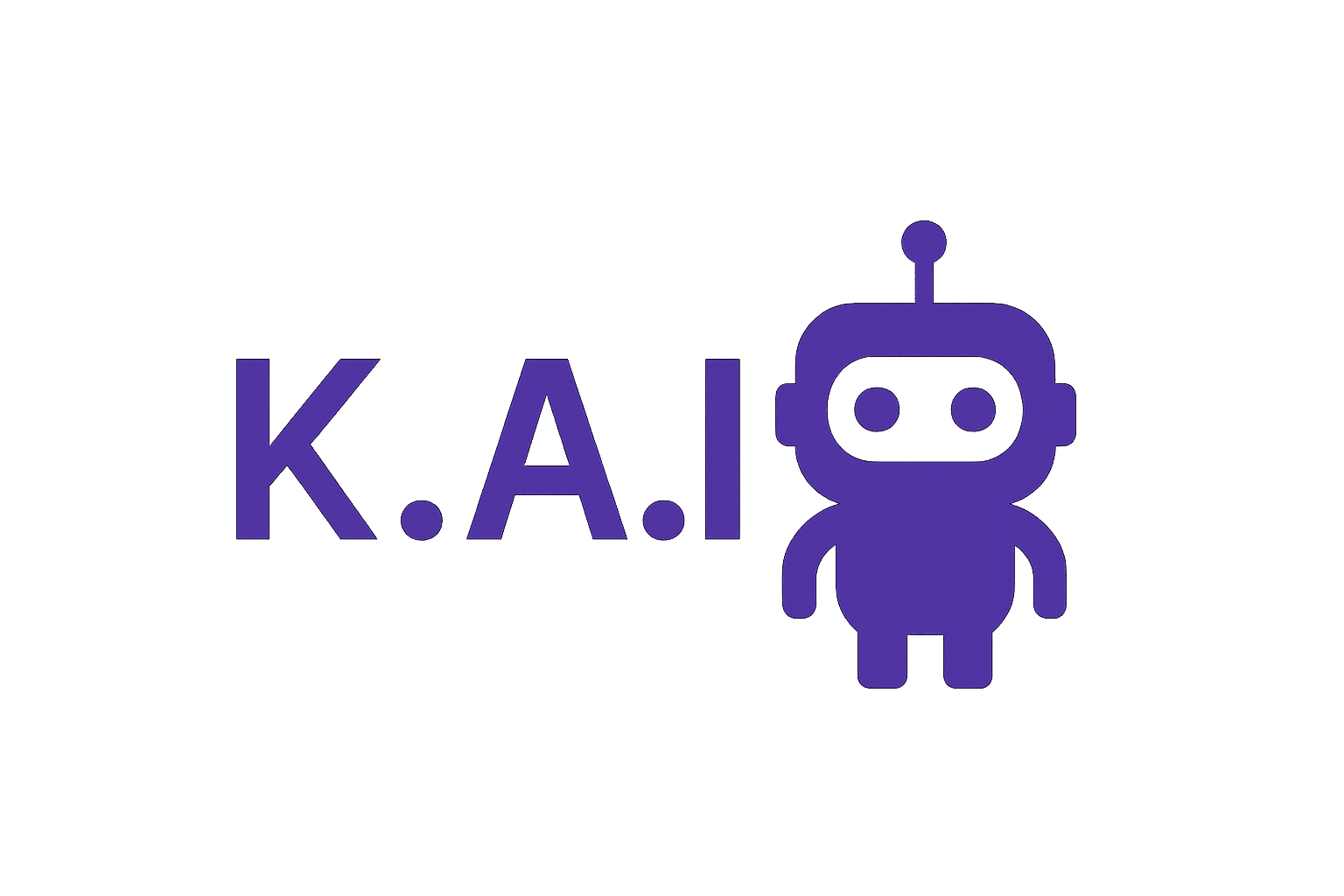
Hey there!
Let's talk about getting started with AI without the overwhelm.
Does it feel like everyone's talking about using AI for marketing, but you're still stuck trying to figure out where to even start? Trust me, you're not alone. This week I want to share a simple roadmap for getting AI integrated into your daily workflow.
I've been watching how marketers approach AI adoption, and there's a clear pattern: those who start small and build momentum win, while those trying to overhaul everything at once get stuck.
Let's break down how to actually make this happen.
What's Currently Got My Attention
🔥 OpenAI's GPT-4o Now Generates Amazing Images - Last week OpenAI launched native image generation within their GPT-4o model, and it's seriously impressive! Unlike previous models that struggled with rendering text or accurate details, GPT-4o can create images with properly rendered text, follow complex prompts with precision, and maintain consistency across multiple interactions. The quality improvement over DALL-E 3 is immediately noticeable. I've been having a blast creating graphics where the text is actually readable, and of course making anime versions of myself!
Stop Waiting for Perfection
Speaking of these impressive image generation improvements, it's amazing to think that just 6 months ago, many marketers were convinced AI would never get text right in images for things like ad creative. Yet here we are today, with models that can create production-ready graphics with perfectly readable text. This rapid improvement is exactly why you can't afford to hesitate with AI implementation. These tools are coming (and improving fast) whether you like it or not. The marketers who start building their AI muscles now will have an enormous advantage over those still sitting on the sidelines waiting for "perfection" before they begin.
The Implementation Roadmap
The Challenge:
Have you noticed how many AI tools are sitting unused in your digital toolkit? You're not alone. Many marketers get excited about AI but then struggle to actually integrate them into their daily work.
The problem? We try to do too much at once. We hear about AI revolutionizing marketing and expect instant transformation. But real implementation requires a systematic approach.
The Approach:
I recently watched Jeff Su's excellent video breaking down a practical implementation process (if you haven't seen it, definitely check it out). His approach aligns perfectly with what I've seen work with marketers who successfully integrate AI into their workflows.
Here's the framework I recommend:
Implementation Framework:
- Exploration Phase: List out your regular marketing tasks and research which AI tools could help with each (bonus points if you use an AI tool to help with this!). Aim to find the minimum number of tools that cover the maximum number of tasks. The goal is to find the first version of your minimum viable AI toolkit. Note: ChatGPT, Claude, or Gemini can usually do 80% of what you need, so you can pick one of these and add some more niche tools to round out the toolkit such as Perplexity or NotebookLM
- Implementation Phase: Choose 1-3 tasks per week. Block extra time in your calendar (this is crucial), and force yourself to use AI for these specific tasks. Yes, it might take longer initially as you learn, but that's normal.
- Optimization Phase: Once you're comfortable with these tasks, add more. Keep building on your success while continuing to refine your existing AI workflows. If you feel another AI tool would do better, add it to the toolkit! My toolkit usually changes every couple of months.

Results & Metrics:
When done this way, you'll see real progress within 4-6 weeks. The key metrics to watch:
- Time saved per task (expect 20-30% after the initial learning curve)
- Consistency of AI tool usage (aim for 3+ times weekly)
- Number of tasks with integrated AI workflows (start with 1-3, build to 5+)
My AI Journey
I didn't start as an AI power user overnight. My first step was simply using ChatGPT to help with social media captions and email subject lines. It felt clunky at first, and honestly, sometimes took longer than doing it myself.
But I stayed consistent, adding one new AI-assisted task every couple weeks. Now I use a full AI stack that touches nearly every aspect of my work and personal life. The compound effect is remarkable. I estimate I'm saving 15-20 hours weekly compared to my pre-AI workflows.
If You Read Nothing Else...
Start with ONE task this week. Block 30 extra minutes to do it with AI. Expect it to feel awkward, but commit to trying three times before judging the results.
Your First Step: Voice Mode Is Your Secret Weapon
Here's the simplest way to start: Use voice mode in ChatGPT and literally ask: "How can I integrate AI into my [specific marketing task]?"
Then have a conversation. Describe your current process, challenges, and goals. The AI (we call her Chathy at Builder Funnel) will help you build a personalized plan.
People seriously underestimate voice mode! It removes the friction of typing prompts and makes the experience feel more collaborative, more like talking to a colleague than learning a new tool.
That's it for this week! Remember, the goal isn't to transform everything overnight - it's to build sustainable AI habits that compound over time.
Until next time,
Kai
P.S. What's one marketing task you'd like to use AI for but haven't figured out yet? Hit reply and let me know - I might cover it in an upcoming newsletter!
The AI Implementation Roadmap: From Overwhelm to Action
Learn a practical 3-phase AI implementation roadmap for marketers that starts small and delivers results in weeks.
